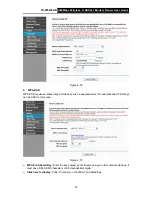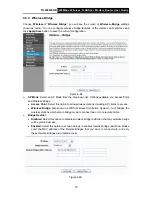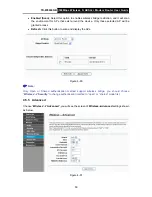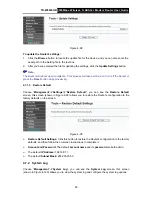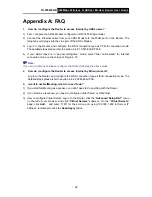
TD-W8960NB
300Mbps Wireless N ADSL2+ Modem Router User Guide
¾
Disable/Enable:
Select the
Enable
to log the events, if you don’t want to log these events,
please select
Disable
.
¾
Log Level:
Select the Log level in the drop-down list, for the Log level, all events above or
equal to the selected level will be logged.
¾
Display Level:
Select the Display level in the drop-down list, for the Display Level, all logged
events above or equal to the selected level will be displayed.
¾
Mode:
Select the mode to record the events. If the selected mode is
Local,
events will be
recorded in the local memory. If the selected mode is
Remote
, events will be sent to the
specified IP address and UDP port of the remote system log server. If the selected mode is
Both
, events will be sent to the local memory and the remote system log server.
¾
Server IP Address:
Type the address of the server you want to record the events.
¾
Server UDP Port:
Type the UDP Port of the server.
4.7.3 SNMP Agent
Choose “
Management
”
Æ
“
SNMP Agent
”, you can see the SNMP-Configuration screen as shown
below.
SNMP
(Simple Network Management Protocol) has been widely applied in the computer networks
currently, which is used for ensuring the transmission of the management information between
any two nodes. In this way, network administrators can easily search and modify the information
on any node on the network. Meanwhile, they can locate faults promptly and implement the fault
diagnosis, capacity planning and report generating.
An
SNMP Agent
is an application running on the Router that performs the operational role of
receiving and processing SNMP messages, sending responses to the SNMP manager, and
sending traps when an event occurs. So a Router contains SNMP "agent" software can be
monitored and/or controlled by SNMP Manager using SNMP messages.
An
SNMP Manager
or SNMP Service is an application that performs the operational roles of
generating SNMP messages/requests to modify and retrieve management information, and
receiving the requested information and trap-event reports that are generated by the SNMP agent.
SNMP Manager is the third-party management system. Monitor one is an SNMP Manager.
Figure 4-103
87


